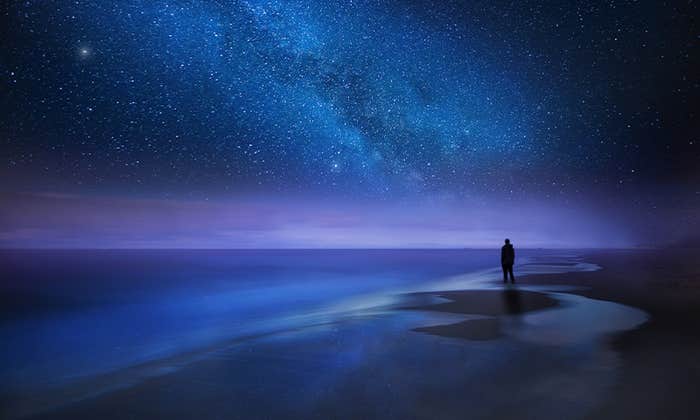When the Cassini spacecraft reached the end of its lifetime orbiting Saturn in 2017, it had been operating well beyond its original four-year mission. Extended for two years, and then for seven, it had observed Saturn, its moons, and its ring system for 13 years before plunging, as instructed, into Saturn’s atmosphere. As it did, it left 13 years of data in our care, with many treasures still lying hidden buried within.
One of the more perplexing questions about Saturn seems like quite a fundamental one—while we can all unanimously agree that the elaborate system of rings surrounding the planet is spectacular: How long have they been there?
A new Science paper is adding to a growing pile of evidence that they’re really quite fresh—no more than 400 million years old, and potentially less than 100 million years old. If they’re less than 100 million years old, that would have the rings of Saturn forming in the middle of the Cretaceous period here on Earth, while 400 million years would push us backward to the era when the first trees appeared on land, and the ancestors of the modern shark first emerged.
Regardless of how old the rings are, there are a few things we’re certain of. The rings are very thin—only 20 meters thick in places—and spread out over a very large surface area. They’re also almost entirely made up of pure water ice. By mass, the rings are more than 95 percent chunks of different ices, and by volume, something more like 98 to 99.9 percent water ice. What’s more, we know that in between the planets there is a constant rain of microscopically tiny particles of ice and rock, which we could just as easily call “dust.”
So the presumption is thus: If the rings are 95 percent water ice by mass now, and they’ve been constantly bombarded by pieces of grit which are not ice, then at some point in the past, the rings must have been entirely pristine water ice. It’s unlikely that Saturn’s rings were ever actually pure water ice, but making this assumption puts an upper bound on how long they could have been around. What you need at this point is an estimate on how intensely the rings have been bombarded by interplanetary dust—the more rapidly the dust accumulates on the rings, the younger they must be, in order to still be so bright and so icy. This is a very technical version of looking at the snow at the edge of a road—if it’s fresh powder, it will look a brilliant white. But given enough time or enough cars passing, dirt from the road will mix into the snow, darkening it into a pile of much less aesthetically pleasing frozen mud.
To form rings after the fact, something catastrophic has to happen.
Cassini was able to provide exactly this estimate. On board Cassini was the Cosmic Dust Analyzer, which was primarily designed to find the chemical composition of the particles it encountered, assess the sizes of those particles, and establish the direction and speed they were traveling before being intercepted. The direction and speed combine to allow an estimate of the path that piece of dust had taken to reach Cassini. Many of the dust particles turned out to be falling inward from outside of Saturn’s gravitational realm—most often, they seemed to be drifting toward Saturn from the Kuiper Belt, a ring of icy objects around the sun just beyond the orbit of Neptune. These detected grains of dust are the critical micrometeorites—micron-sized particles, typically less than the size of a single red blood cell.
Given the rate at which Cassini encountered these micrometeorites, and the mass of those particles, you can figure out how much time you’d need to go from a pure, pristine ring of water ice, to one that is “polluted” to its current state. There are a few more assumptions that go into this calculation—one is that the micrometeorites are also substantially icy in content, so only 10 percent of their mass is actually increasing the non-ice content of Saturn’s rings. If that turns out to be an underestimate and the dust is actually rockier than that, the rings could be even younger. There are also some assumptions about how much of the ring mass evaporates away with every impact, based on the measured speed of the incoming particles.
With all of these measurements and assumptions combined, using only the particles Cassini ran into that the research team was highly confident came from outside Saturn, the rings could only be 400 million years old before they would have to be perfectly pure water ice. If they included all the additional dust particles that they consider extremely likely to be from outside Saturn, then the age estimate drops down to 100 million years. In that case, flowering plants are older than Saturn’s rings.
A young set of rings around Saturn means that these rings wouldn’t have formed with the planet—Saturn itself is much older, forming around 4.5 billion years ago with the rest of the major planets in the solar system. To form rings after the fact, something catastrophic has to happen. Perhaps, some 100 million years ago, an ice-rich moon drifted too close to Saturn. Saturn’s gravity would have been able to stretch that hapless moon, like a much more intense version of the Earth’s tides, and continue to stretch it until it broke, shattering into many fragmented pieces. Saturn’s rings are only 40 percent the mass of Mimas, after all—so a single shattered moon might be enough—or perhaps it was two moons, smashing together, and destroying both.
What a spectacular time in the solar system—when Saturn has rings. These rings have taught us that they are possible, to know to look for them around other worlds, and to appreciate their temporary glamor. ![]()
Lead image: NASA/JPL/Space Science Institute





























